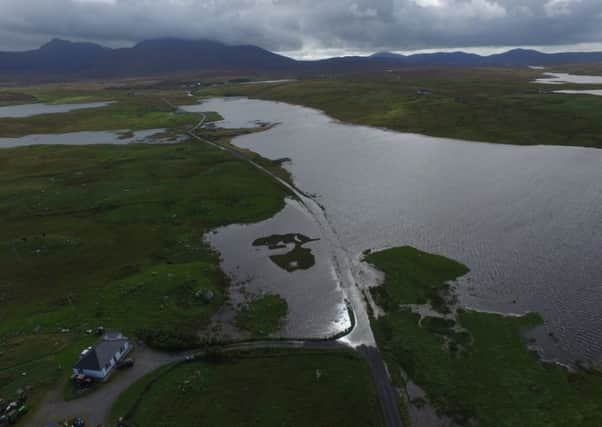State-of-the-art flood mapping technology to be used in Western Isles


The current cost of coastal flood damage to Scotland’s economy is estimated at £53 million annually, with potentially devastating effects on lives and communities.
As Scotland’s national flood forecasting, flood warning and strategic flood risk management authority, the Scottish Environment Protection Agency helps Scotland prepare for potential future flooding.
Advertisement
Hide AdAdvertisement
Hide AdTo make informed decisions, gathering the most up-to-date data on flood risk, flood mapping and coastal erosion data is a critical part of this process. SEPA is a significant investor in technology to gather this data – and over the next few months in the Outer Hebrides – the agency is using state-of-the-art aerial surveying technology, funded by the Scottish Government, to collect robust data to help improve current flood risk models. In line with Scotland’s Digital Strategy, the Scottish Government is working collaboratively with public sector bodies to invest in new collective data agreements.
This includes a national ‘LiDAR’ capture programme. Standing for ‘Light Detection and Ranging Survey’, this surveying technique uses laser technology to build a detailed digital 3D model of Scotland’s terrain. SEPA has been using the LiDAR system since 2011 to survey coasts and river banks in far greater detail, to better understand and map new flood warning areas, making them more meaningful and accurate for the people and businesses they serve.
“It basically involves building a three-dimensional map of the terrain to help us understand in greater detail than we currently have which areas are most at risk from flooding,” explains project co-lead Pascal Lardet, who is SEPA’s flood warning & informing unit manager.
“The aerial survey will be carried out over the coming months and local residents and businesses should be aware that a small aircraft will be flying over the islands during periods of fair weather and around times of low tides.
Advertisement
Hide AdAdvertisement
Hide Ad“This survey is the second development phase of a new coastal flood warning scheme to be launched for the Outer Hebrides in 2020. The first phase involved the installation of two new tide gauges at Berneray and Eriskay. All these new data will enable us to develop a state-of-the-art coastal flood forecasting system over the next two years.”
The new coastal flood warning scheme for the Outer Hebrides will be developed in close collaboration with the local council for the islands – Comhairle nan Eilean Siar.
SEPA will be engaging with local residents and businesses as the project progresses. Weather permitting, the LiDAR survey is expected to be complete by April 2019.
SEPA currently provides a flood warning service to almost 300 communities across Scotland and this September launched 19 new coastal flood warning areas covering Orkney and the North East Coast.